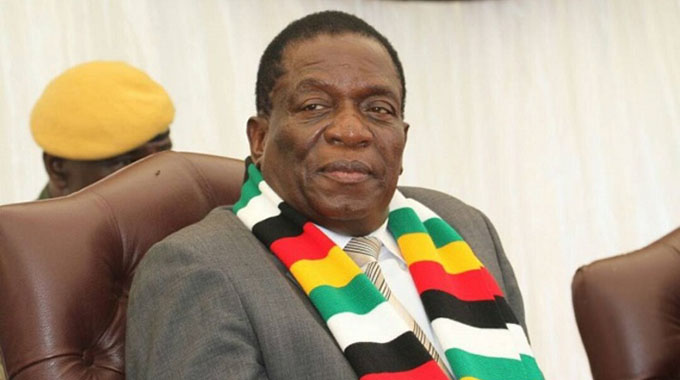
The Sunday News

THE Government has come up with a number of initiatives to better the lives of the people of Zimbabwe, with various social safety nets already in place.
Apart from raising salaries for its workers, the Government also came up with a public transport initiative through Zupco, where bus fares are heavily subsidised. As the country grapples with the effects of drought, the Government has stepped in and declared that no one will starve, and the food relief has since been spread from rural areas to urban areas.
In addition, needy households across the country will also receive some cash every month, on top of school fees that is paid for children from underprivileged families.
President Mnangagwa last week assured the nation that no one will die of hunger as Government has enough grain in its reserves to assist those in need of aid. He also implored structures of Government and traditional leaders to identify everyone in need of assistance so that resources can be channelled accordingly.
For the first time, Government is also starting to distribute food aid to the vulnerable and food insecure in urban areas, as it broadens its social safety nets. Speaking at a groundbreaking ceremony for commencement of works on the 6,5km stretch of the Harare-Chirundu Highway, President Mnangagwa said he had been briefed by Mashonaland West Minister of State about hunger in some areas.
He said Government relied on local government systems including councillors, members of Parliament and the traditional leadership to identify people in need of food assistance.
“We have the local Government structure including provincial and district development co-ordinators, councillors at ward level and members of Parliament. Councillors should know who is in need of food assistance in their ward. That goes for headmen and other traditional leaders. Even the ruling party Zanu-PF has structures that can be used to get information to the highest level coming from the village level. With these channels available, no one should die of hunger. This should be communicated so that we know the number of people in need of assistance in each area,” said President Mnangagwa.
Government working with co-operating partners such as the World Food Programme (WFP) has also launched a food distribution programme targeting people in urban areas where an estimated 2,2 million people need assistance. WFP said the effects of hunger were expected to rise from January to March 2020 with 59 percent of rural households representing over 5,5 million vulnerable people.
The United Nations body is targeting to extend assistance to over two million people, while also helping communities to build resilience to climate change and future shock impacts. It will require $173 million to undertake the intervention.
In addition, the Government will soon resume cash transfers amounting to $40 million to more than 60 000 vulnerable households to cushion them against the current economic challenges and rising cost of living.
The exercise, which is administered through the harmonised social cash transfer programme (HSCT), was discontinued a few years ago owing to cash shortages. An additional $63 million has also been released to clear school fees arrears accrued through the Basic Education Assistance Module (BEAM) programme, which provides assistance to 415 900 disadvantaged children countrywide.
“Currently, a new e-payment system is being put in place within the next one month in which Econet won a tender to disburse HSCT funds to beneficiaries in various districts via the EcoCash platform. 62 017 beneficiary households, who are food-poor and labour-constrained, will benefit. Currently, $39 472 644 — which is being reviewed upwards — will be disbursed,” said Public Service, Labour and Social Welfare Minister Dr Sekai Nzenza.
The 2019 Zimbabwe Vulnerable Assessment Committee (ZimVac) report revealed that Government remains the major provider of support to vulnerable communities in need of food assistance countrywide. The report stated that of vulnerable households that received food assistance in 2018-19, 56 percent got support from Government, 13 percent from non-governmental organisations and the United Nations. Three percent received support from churches, while 16 percent were aided by relatives within rural areas.



